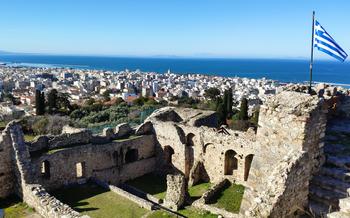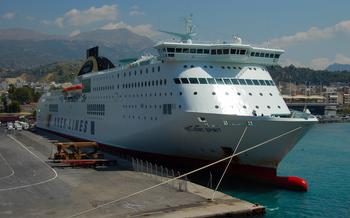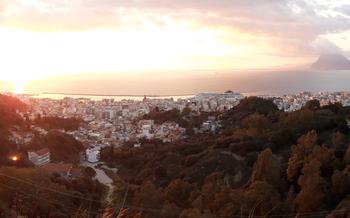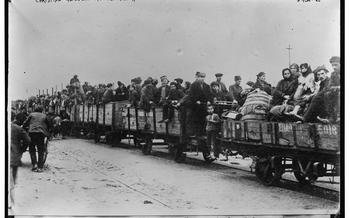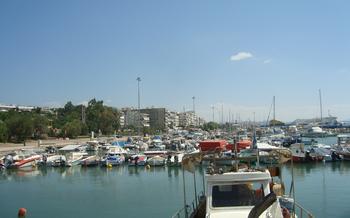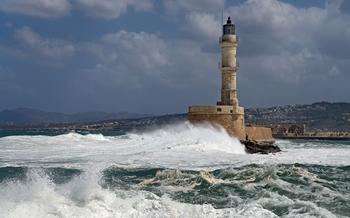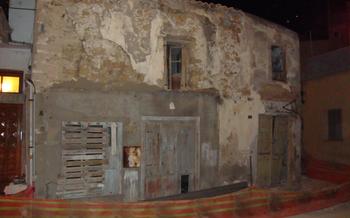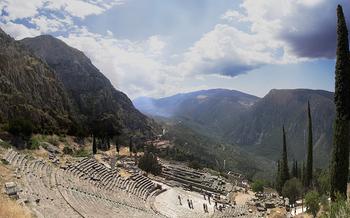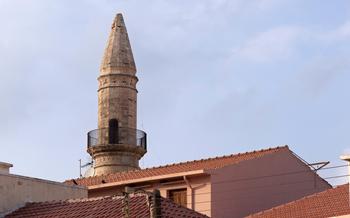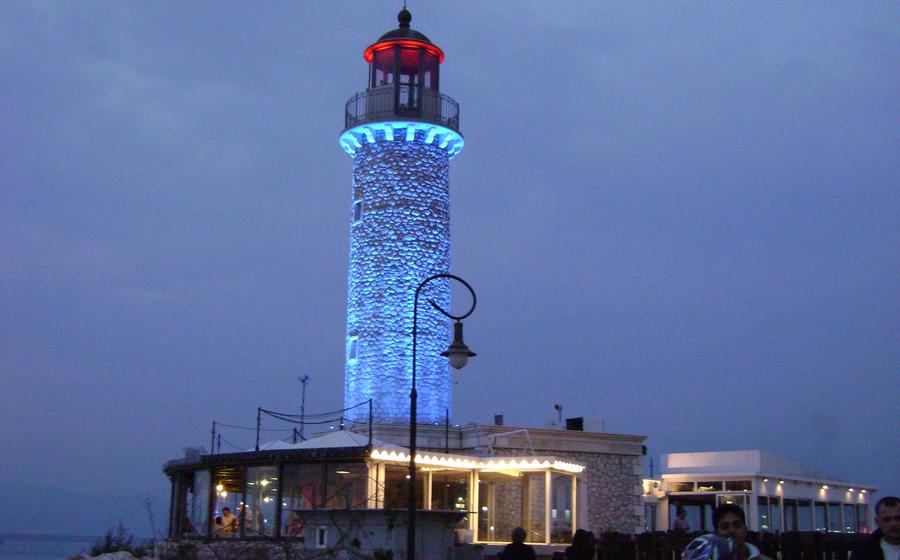
The Patras Carnival House
- The Patras Carnival House: An Ode to Celebrations
- Unveiling the Carnival House's Treasures
- The Carnival's Global Appeal
- The Sounds of the Carnival
- Carnival Gastronomy: A Culinary Journey
- The Carnival's Social Impact
- Behind the Scenes: The Carnival's Preparation
- The Carnival's Legacy: Preserving Traditions
- The Carnival's Future: Embracing Innovation
- Carnival Etiquette: Navigating the Festivities
- Carnival Costumes: A Symphony of Creativity
- Carnival Safety: Ensuring a Joyful Experience
- Insider Tip: Experience the Carnival Like a Local
The Patras Carnival House: An Ode to Celebrations
Patras, the vibrant port city of Greece, boasts a rich carnival tradition that dates back to the 19th century. The Patras Carnival House, a captivating museum dedicated to this beloved festival, invites visitors to embark on a journey through the history, traditions, and captivating spectacle of the Patras Carnival. As you step into this treasure-trove of carnival lore, you'll discover the legacy of King George I, whose decree in 1860 officially recognized the carnival and set the stage for its transformation into a grand celebration. Through interactive exhibits, anecdotes, and local perspectives, the museum vividly portrays the carnival's evolution from its humble beginnings to its current status as one of the most renowned carnivals in Europe.
Unveiling the Carnival House's Treasures
Nestled in the heart of Patras, the Patras Carnival House stands as a testament to the city's vibrant carnival traditions. Within its walls, visitors are transported on a journey through time, immersing themselves in the rich history and captivating stories of this iconic celebration. The museum's collection boasts an array of exquisite exhibits, showcasing the artistry and craftsmanship that define the Patras Carnival.
Elaborate costumes, adorned with intricate details and vibrant colors, take center stage, narrating the evolution of carnival fashion over the decades. Interactive displays invite visitors to delve deeper into the creative process, tracing the journey from initial sketches to the final masterpieces that grace the parade floats. Personal anecdotes from carnival participants, shared through audio-visual presentations, bring the stories behind the costumes to life, offering a glimpse into the passion and dedication that fuel this extraordinary event.
The Carnival's Global Appeal
The Patras Carnival has garnered international recognition and participation, attracting visitors from across the globe. Foreign tourists are captivated by the event's unique blend of tradition, creativity, and infectious energy. Many come to witness the spectacle and immerse themselves in the vibrant atmosphere of the city. The carnival provides a platform for cultural exchange and understanding, allowing visitors to experience the rich heritage and customs of Greece.
International travelers often remark on the warmth and hospitality of the local people, who eagerly welcome visitors into their homes and share their traditions. The carnival has become a symbol of Greek culture and a testament to the country's rich history. The event's global appeal is a testament to its universal themes of celebration, joy, and the pursuit of happiness.
Promoting the Patras Carnival globally presents both challenges and opportunities. While the event's popularity continues to grow, organizers must carefully manage the impact of tourism on the local community and environment. Balancing the preservation of traditions with the need for innovation is crucial to ensuring the carnival's long-term sustainability.
For international travelers planning to attend the Patras Carnival, it is essential to plan well in advance. Booking accommodation and transportation early is recommended, as the city can become crowded during the event. It is also important to respect local customs and traditions, and to dress appropriately for the occasion. The carnival is a time for celebration, but it is also a time to show respect for the local culture.
The Sounds of the Carnival
Music is an integral part of the Patras Carnival, creating a vibrant and lively atmosphere that captivates the senses. The streets come alive with the infectious rhythms of traditional Greek music, played by talented musicians and bands. The Carnival House features exhibits dedicated to the musical heritage of the event, showcasing traditional instruments such as the bouzouki, klarino, and laouto. Visitors can learn about the history and evolution of these instruments and their significance in shaping the unique sounds of the carnival.
Personal anecdotes from musicians and performers who have participated in the carnival add a personal touch to the museum experience. They share stories about their passion for music, the challenges and rewards of performing at the carnival, and the unforgettable moments they have witnessed. These stories bring the music of the carnival to life and provide a deeper understanding of its cultural significance.
Carnival Gastronomy: A Culinary Journey
The Patras Carnival is not just a feast for the eyes and ears, but also for the taste buds. The city's culinary scene bursts into life during the carnival, offering a tantalizing array of local delicacies and traditional dishes that are synonymous with the celebration.
One of the most iconic carnival treats is the "tsoureki", a sweet, braided bread flavored with orange zest and mastic, a resin from the mastic tree. These golden loaves are often decorated with colorful sprinkles and served with a cup of hot chocolate or coffee, providing a warm and comforting start to the day's festivities.
Another carnival favorite is "loukoumades", delicious Greek doughnuts that are deep-fried until golden brown and then drenched in honey syrup or sprinkled with cinnamon and sugar. These bite-sized treats are a popular street food, often sold by vendors throughout the city.
For those seeking a more substantial meal, the carnival offers a variety of traditional Greek dishes with a twist. "Fasolada", a hearty bean soup, is often served with a side of "lagana", a flatbread that is only eaten during Lent. "Gemista", stuffed tomatoes and peppers, and "stifado", a beef stew with onions and tomatoes, are other popular dishes that can be found in many local tavernas during the carnival.
No carnival celebration would be complete without a glass of "ouzo", the anise-flavored spirit that is synonymous with Greece. Ouzo is often served with "mezedes", small plates of appetizers that are meant to be shared. Some popular mezedes include "tzatziki", a yogurt-based sauce with cucumber and garlic; "dolmades", stuffed grape leaves; and "keftedes", fried meatballs.
Whether you're indulging in sweet treats or savory delights, the Patras Carnival offers a culinary journey that is sure to tantalize your taste buds and leave you craving more.
The Carnival's Social Impact
The Patras Carnival is not just a celebration of revelry and entertainment; it also plays a crucial role in fostering social cohesion and community development. The event generates substantial economic benefits for the city, creating employment opportunities and stimulating local businesses, particularly in the hospitality and tourism sectors. The influx of visitors during the carnival period contributes to increased revenue for hotels, restaurants, souvenir shops, and transportation services.
Beyond its economic impact, the carnival serves as a platform for cultural exchange and understanding, bringing together people from diverse backgrounds and nationalities. The event promotes a sense of unity and belonging among the local community, strengthening social bonds and creating opportunities for intercultural dialogue. The carnival's emphasis on creativity, self-expression, and inclusivity fosters a welcoming and tolerant atmosphere, where individuals from all walks of life can come together to celebrate their shared love of the festival.
One local resident, Maria, shared her personal experience of the carnival's social impact. She described how the event brought her family and friends closer together, creating lasting memories and strengthening their bonds. The carnival also allowed her to connect with people from different cultures, fostering a sense of global community and understanding.
The Patras Carnival's positive influence extends beyond the city limits, contributing to the promotion of Greek culture and heritage on a national and international level. The event attracts visitors from across the country and around the world, showcasing the unique traditions and customs of Greece to a global audience. This exposure helps to raise awareness of Greek culture, promoting tourism and fostering a sense of national pride.
Behind the Scenes: The Carnival's Preparation
Before the vibrant colors and infectious melodies of the Patras Carnival fill the streets, an intricate web of preparation unfolds behind the scenes. The carnival's success is a testament to the year-long dedication and tireless efforts of a diverse team of stakeholders.
At the helm are the carnival's organizers, who orchestrate every aspect of the event, from securing permits and coordinating logistics to selecting parade themes and managing finances. Their vision and leadership set the stage for the carnival's grand spectacle.
Working alongside the organizers are countless volunteers, whose passion and commitment breathe life into the carnival. They tirelessly contribute their time and skills, from constructing floats and designing costumes to managing events and ensuring the safety of participants and spectators.
Local businesses also play a crucial role in the carnival's preparation. They provide financial support, donate materials, and offer their expertise to ensure the smooth running of the event. Their involvement reflects the deep connection between the carnival and the local community.
The collaboration between organizers, volunteers, and businesses creates a synergistic environment that fosters creativity and innovation. Together, they transform the city of Patras into a vibrant stage where the carnival's magic unfolds.
The Carnival's Legacy: Preserving Traditions
The Patras Carnival is not just a celebration; it is a legacy that has been passed down from generation to generation. Preserving its cultural heritage is of paramount importance to the people of Patras. Local organizations, such as the Patras Carnival Committee and the Patras Carnival Association, play a crucial role in safeguarding the event's authenticity. They work tirelessly to ensure that traditional practices, customs, and rituals are upheld, while also promoting the carnival to a wider audience.
One of the most significant ways in which the carnival's legacy is preserved is through the passing down of traditions from parents to children. Families often participate in the carnival together, with children inheriting their parents' passion for the event. This ensures that the carnival's traditions and values remain strong within families and communities.
Preserving the Patras Carnival is not just about maintaining a cultural heritage; it is about preserving a way of life. For the people of Patras, the carnival is an integral part of their identity and their community. By safeguarding its traditions and ensuring its continuity, they are preserving a piece of themselves and their history.
The Carnival's Future: Embracing Innovation
The Patras Carnival is a dynamic and evolving celebration that has successfully adapted to changing times while preserving its unique traditions. As the world continues to evolve, the carnival faces new challenges and opportunities.
Maintaining Relevance: In the face of a rapidly changing cultural landscape, the carnival must find ways to maintain its relevance and appeal to younger generations. This can be achieved by incorporating contemporary elements into the festivities, such as modern music, technology, and interactive experiences.
Balancing Tradition and Innovation: Striking a balance between tradition and innovation is crucial for the carnival's continued success. While preserving the event's cultural heritage is essential, embracing new ideas and approaches can help keep the carnival fresh and exciting. This can include experimenting with new parade themes, incorporating different art forms, or exploring new ways to engage with audiences.
Sustainability: As the world becomes increasingly aware of environmental and social issues, the carnival must adapt to become more sustainable. This can involve using eco-friendly materials for costumes and decorations, reducing waste, and promoting responsible tourism practices.
Global Collaboration: The carnival has the potential to become a truly global event, attracting visitors from all corners of the world. By fostering international collaborations and partnerships, the carnival can share its unique traditions with a wider audience and promote cultural exchange.
The Patras Carnival is a vibrant and adaptable celebration that has stood the test of time. By embracing innovation while respecting tradition, the carnival can ensure its continued success for generations to come.
Carnival Etiquette: Navigating the Festivities
Attending the Patras Carnival is an immersive experience that requires respect for local customs and traditions. To ensure a harmonious and enjoyable time, visitors should be mindful of the following etiquette tips:
-
Respect Local Traditions: The carnival is deeply rooted in Greek culture, and visitors should respect local traditions and customs. This includes understanding the significance of certain rituals, such as the burning of the carnival king, and refraining from any actions that may be deemed disrespectful.
-
Embrace the Festive Spirit: The carnival is a time for joy, laughter, and celebration. Visitors should embrace the festive spirit by actively participating in the festivities, dancing, singing, and interacting with the locals.
-
Be Mindful of Your Attire: While costumes are encouraged during the carnival, visitors should dress appropriately and avoid wearing anything that may be offensive or culturally insensitive.
-
Stay Safe and Respectful: The carnival can be crowded, and visitors should be mindful of their surroundings and take precautions to ensure their safety. This includes being aware of pickpockets and avoiding confrontations or arguments.
-
Blend In with the Locals: To truly immerse oneself in the carnival experience, visitors should make an effort to blend in with the locals. This includes learning a few Greek phrases, trying local delicacies, and engaging in conversations with the friendly residents of Patras.
Carnival Costumes: A Symphony of Creativity
At the heart of the Patras Carnival lies a symphony of creativity expressed through the elaborate and mesmerizing costumes that adorn the participants. These costumes are not mere garments; they are works of art, meticulously crafted by skilled designers and artisans who pour their passion and imagination into each piece. The history of costume design in Patras is a rich tapestry of influences, drawing from ancient Greek mythology, Venetian traditions, and contemporary artistic trends.
Over the years, the costumes have evolved to reflect the changing themes and zeitgeist of the carnival. From the grandeur of historical attire to the whimsy of fictional characters, each costume tells a unique story. The designers work tirelessly, using a variety of materials and techniques to bring their visions to life. From intricate beading and embroidery to innovative sculpting and molding, the costumes showcase the boundless creativity of the carnival's artisans.
For those who wish to participate in the carnival in full regalia, there are numerous options available. One can choose to rent a costume from local shops that offer a wide selection of designs. Alternatively, for a truly personalized experience, one can commission a custom-made costume from a local designer. The process of creating a custom costume is a collaborative journey between the designer and the wearer, ensuring that every detail is tailored to perfection.
Whether renting or commissioning a costume, it is important to consider the theme of the carnival and one's personal style. The goal is to create a costume that is not only visually stunning but also comfortable to wear throughout the festivities. After all, the carnival is a marathon of celebration, and one needs to be able to dance, parade, and socialize without feeling restricted by their attire.
Donning a carnival costume is a transformative experience that allows one to step into a different persona and embrace the spirit of the celebration. As you parade through the streets, surrounded by a sea of vibrant colors and imaginative creations, you become part of the living spectacle that is the Patras Carnival.
Carnival Safety: Ensuring a Joyful Experience
The Patras Carnival is a massive event that attracts millions of participants and visitors. While it is generally a safe and joyous occasion, it's crucial to be aware of potential risks and take necessary precautions to ensure a trouble-free experience.
Personal Safety: - Avoid carrying large sums of money or valuables. - Be cautious of pickpockets in crowded areas. - Stay alert and aware of your surroundings, especially at night. - If you feel threatened or unsafe, seek help from a police officer or a trusted carnival volunteer.
Crowd Management: - Be prepared for large crowds and potential congestion. - Follow the instructions of crowd control personnel to ensure a smooth flow of movement. - If you feel overwhelmed or claustrophobic, move to a less crowded area or take a break from the festivities.
Emergency Preparedness: - Familiarize yourself with the location of first aid stations and emergency exits. - Keep a charged mobile phone with you in case you need to contact emergency services or a friend. - If you witness an accident or require assistance, don't hesitate to approach a police officer or a carnival volunteer.
Remember, the Patras Carnival is a celebration of joy and unity. By following these safety tips and being mindful of your surroundings, you can fully embrace the magic of the carnival while ensuring your well-being and that of others.
Insider Tip: Experience the Carnival Like a Local
To truly embrace the spirit of the Patras Carnival, venture beyond the main parade routes and explore the hidden gems that the city has to offer. Engage with the locals and immerse yourself in the authentic carnival experience. Seek out traditional tavernas tucked away in the charming backstreets, where you can savor delicious local cuisine and strike up conversations with friendly locals. These hidden spots offer a respite from the bustling crowds and provide a glimpse into the true essence of the carnival. Embrace the opportunity to connect with the locals, learn about their customs, and gain a deeper understanding of the cultural significance of the event. Whether it's joining in on a spontaneous dance, sharing stories over a glass of wine, or simply observing the locals go about their carnival rituals, these authentic experiences will create lasting memories and leave you with a profound appreciation for the Patras Carnival.

